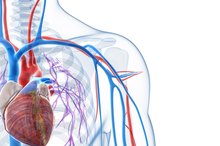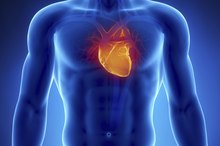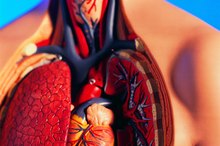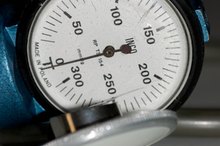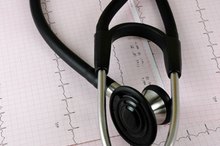What Causes a Pulse in an Artery?
When you go to the doctor, she checks your heart rate by feeling your pulse. With each beat of the heart, a wave of blood is pushed from the heart into the circulation. These waves can be felt as pulsations in arteries close to the skin surface, such as those in the wrist and neck.
If you are experiencing serious medical symptoms, seek emergency treatment immediately.
The Cardiovascular System
The cardiovascular system is a closed circuit of blood vessels that conduct blood throughout the body. The heart is the pump of the circulatory system 2. It keeps blood flowing by pushing it through the circulation with each heartbeat.
The Circulatory System
What Are the Three Major Parts of the Cardiovascular System?
Learn More
The circulatory system has three main types of blood vessels—arteries, capillaries and veins. Arteries carry blood away from the heart to the organs and limbs. The arterial side of the circulation is under high pressure as blood is pushed from the heart with great force. Veins transport blood from the organs and limbs back to the heart. Capillaries are tiny blood vessels that complete the circuit by connecting the arterial and venous sides of the circulation.
- The circulatory system has three main types of blood vessels—arteries, capillaries and veins.
- Arteries carry blood away from the heart to the organs and limbs.
Heartbeats Create Pulses of Blood in Arteries
The heart is a large, powerful muscle roughly the size of your fist. The heart muscle is in a constant rotation of relaxing and contracting. When the heart is relaxed, chambers within the heart fill with blood. Once the chambers are full, the heart contracts, pushing blood through the circulatory system. Each time the heart contracts, a new pressurized wave of blood is propelled into the arterial side of the circulation.
The walls of arteries contain elastic fibers and muscle cells, which enable these blood vessels to expand and contract as waves of blood are propelled through them. In this way, arteries act as auxiliary pumps to keep blood flowing through the circulatory system.
To envision how arterial pulses are created with each heartbeat, picture yourself at the edge of a still pond. If you put your hand into the water and push, you create a wave that travels across the pond. When you repeat the action of pushing the water, you create a series of waves. In this scenario, you are acting as the heart—the pump—creating a series of liquid waves. An analogous situation occurs in the cardiovascular system. Each beat of the heart creates a new wave or pulse of blood flow, which is propagated by the elastic and muscular fibers of the arteries as the wave passes. These waves of pressure can be felt as pulses in arteries close to the skin surface. Hence, by counting pulses in an artery, we know how frequently the heart is beating.
- The heart is a large, powerful muscle roughly the size of your fist.
- Each beat of the heart creates a new wave or pulse of blood flow, which is propagated by the elastic and muscular fibers of the arteries as the wave passes.
Related Articles
References
- “Bates’s Guide to Physical Examination and History Taking”; Lynn S. Bickley, M.D.; 2002
- “Circulatory Physiology”; James J. Smith, M.D., Ph.D.; and John P. Kampine, M.D., Ph.D.; 1980
- “Medline Plus”: Pulse
- National Institute on Aging: Aging Hearts and Arteries.
Writer Bio
Dr. Tina M. St. John owns and operates a health communications and consulting firm. She is also an accomplished medical writer and editor, and was formerly a senior medical officer with the U.S. Centers for Disease Control and Prevention. St. John holds an M.D. from Emory University School of Medicine.
